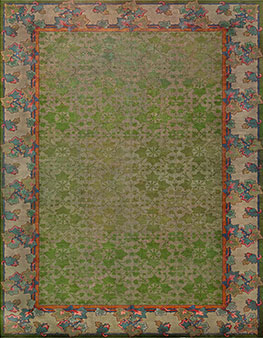The History of Irish Rugs
Although green island of Ireland is not known as a center of carpet industry, Irish have a great and ancient craft that many other countries could be jealous of – Irish rugs included. Weaving was known in Ireland from about 1600 B.C., as archeologists found pottery dating from that period, which shows presence of woven material that was used for placing clay before firing it. Irish National Museum is in a possession of a piece of cloth that is roughly dated to be from 700 B.C. Numerous excavations on the island have recovered stone spinnings and weaving tools that might have been made during the times of Vikings. The Brehon Laws, which were written between the 6th and 8th century, mention that in case of divorce the wife is entitled to keep any tools and fibers used for weaving. This illustrates how important this craft was for the Irish. At that period Irish rugs were of great importance for the people, not only as a source of warmth, but also a way to decorate houses with little money. Though at first the weaving’s purpose was to supply weaver’s family and neighbors, from the 13th century an organized trade started to develop, resulting in creation of Irish market, which was later on largely limited and controlled by the British. Great Famine in the 19th century almost destroyed what was left of this beautiful craft, but thanks to the local organizations, Irish weaving endured.
To make a good quality Irish rug, you need the best possible wool, known as olann. Donegal wool, named after the region in Ireland, is one of the most known kinds of fiber, famous for its colorful slubs and being warm, making it a favorite of fishermen.
Irish Rugs Nowadays
Irish rugs, as we know them today, were born during the Arts and Crafts period, in the late 19th and early 20th century. Characterized by its appreciation for traditional craftsmanship, simple forms, and medieval, romantic, or folk-inspired style, rebelling against strong industrial forms and economic abuse, it was immediately adapted by the Irish. Compared to other European pieces, Irish rugs are an original creation, having more in common with Oriental carpets. Weavers tried to follow in footsteps of their Celtic ancestors and so it happened that their creations had little in common with carpets from the continent. The reason for this stylistic individualism is rather simple – isolation. No wonder that Irish people followed their footsteps – locals felt more connection with ancient Celtic tribes they where descendants of, that English whom they saw as invaders and strangers. Compared to Spanish rugs, from the similar period, Irish carpets were less eclectic but equally colorful. Especially antique pieces, as younger ones show more modesty.





